

Max Davies
How Audi, BMW, Honda, Mercedes-Benz, and Suzuki started out in Australia, and where they are now
44 Minutes Ago
Character and chassis charisma are the Italian SUV’s big drawcards, but does the sporting Stelvio Veloce have the smarts and the heart to live up to expectations?

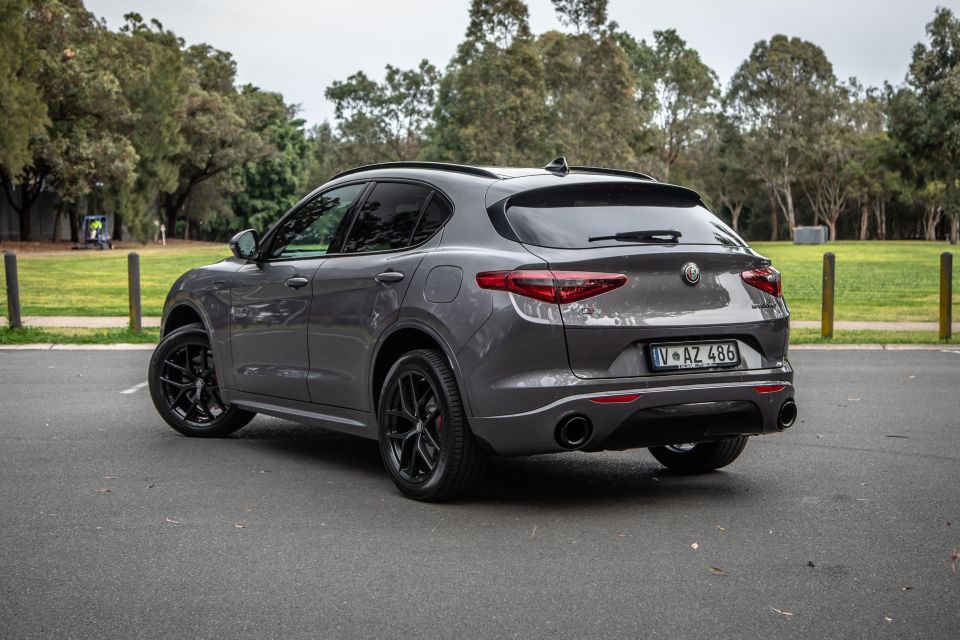

Journalist
New from
$78,950
excl. on-roads

Journalist
New from
$78,950
excl. on-roads


Journalist
New from
$78,950
excl. on-roads

Journalist
New from
$78,950
excl. on-roads
Quickly see how this car stacks up against its competition. Select any benchmark to see more details.
Where expert car reviews meet expert car buying – CarExpert gives you trusted advice, personalised service and real savings on your next new car.
In June, the Alfa Romeo Stelvio Veloce sidled up beside the rest of the four-strong line-up to complete the range, which has recently arrived in facelifted form.
Slotting between the turbo-four Sport and the mighty bi-turbo V6 Quadrifoglio, it essentially adopts a high-power version of the former’s engine plus a smattering of performance and upmarket enhancements to create a variant promising luxury at a not-so-exotic price.
So far, all good. In the broader view, it gains credibility through the Giorgio underpinnings it shares with the Giulia, its reputation for dynamic alacrity at least as prodigious as its actual delivery.

No doubt, in years to come, the Stelvio and Giulia will be considered a purple patch of sorts in Alfa Romeo’s modern renaissance and a finite one at that, given widespread reports the rumoured $5 billion platform is around for a good time but not a very long time.
Unrelated, though relevant to the review, is sales of both Stelvio and Giulia in Australia have been fairly modest. And the current lore around Alfa Romeo is that it’s making absolutely cracking enthusiast-tinged cars that are unfortunately not being embraced by those they target quite as wholeheartedly as they perhaps deserve.
What this review needs to do, then, is to pull the romantically-named Alfa Romeo Stelvio Veloce’s various strings to decide, without too much in the way of rose-tinged romance, if it’s a quality sporting SUV.
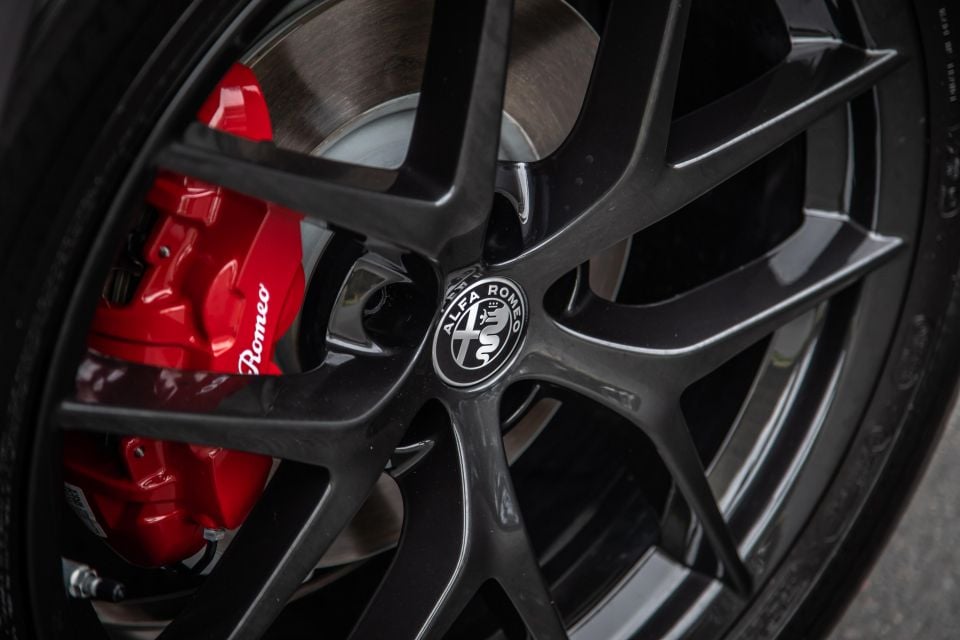
At the third rung up on the Stelvio mountain (gettit?), the Veloce wants for $78,950 before on-road costs, or a bit over $85k drive-away.
It’s $9000 pricier than the Sport sat below it, but a formidable $68,000 less than the Quadrifoglio high-performer.
For the curious, the technically-related Giulia Veloce, as a four-door sedan, lobs at $71,450 list if you’re into it primarily for the Alfisti vibe.

Premium mid-sized SUV cross-shops? There are quite a few. Logical competitors include:
All prices exclude on-road costs.
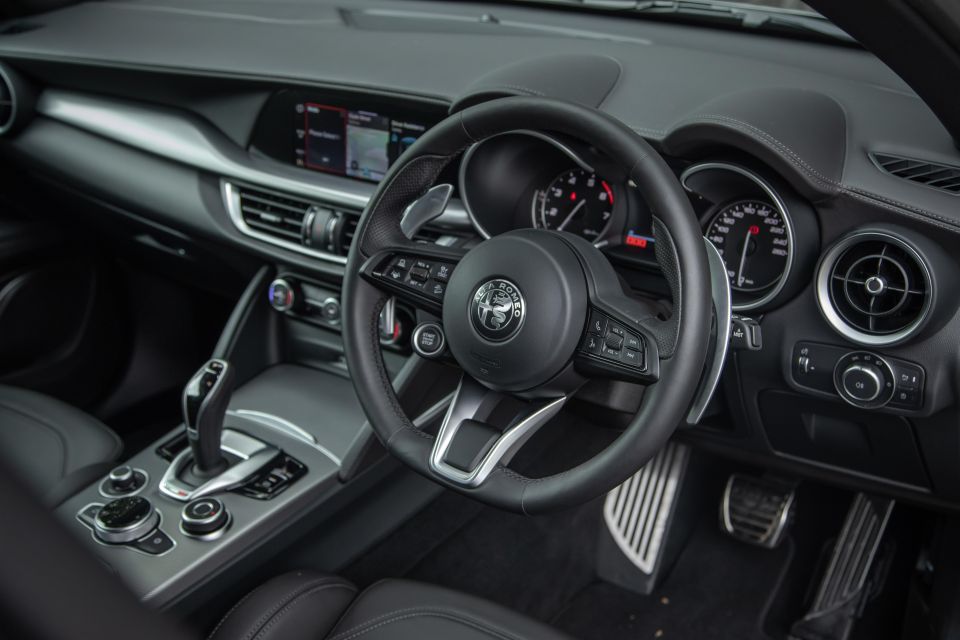
The Veloce is offered in standard Alfa Red and Alfa White, with a choice of six ($2150) cost-optional colours such as our tester’s Vesuvio Grey or the Veloce exclusive Misano Blue.
There are three interior colour schemes to choose from, such as black, red and Chocolate (brown), plus an alternative Veloce Sport clover-leaf 20-inch rim style.
A panoramic glass roof ($3300), yellow- or black-painted calipers ($1000), Harmon Kardon 14-speaker audio ($1650) and spare wheel (replacing the goo kit, $800) are all optionally available.
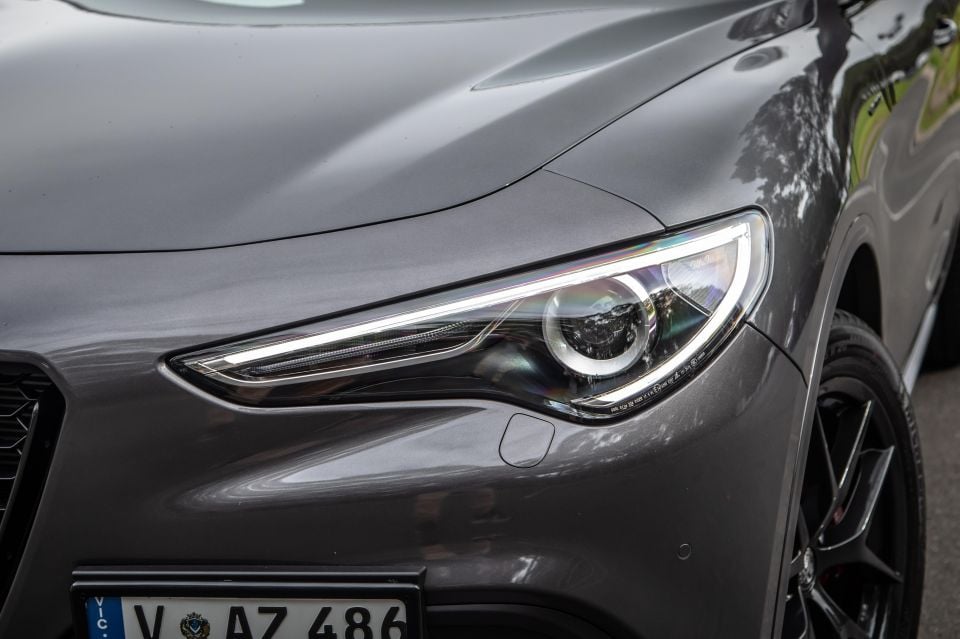
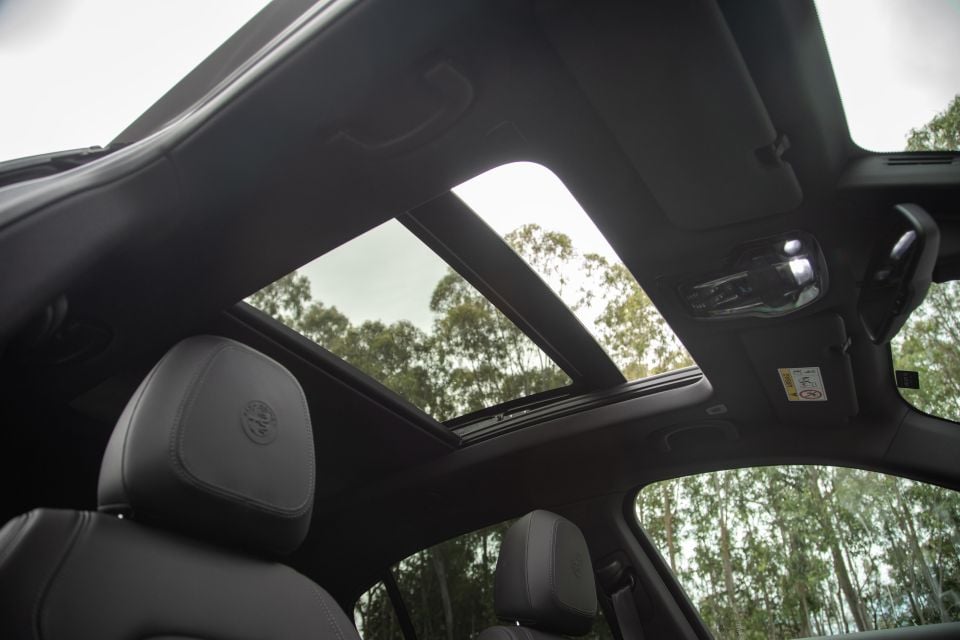
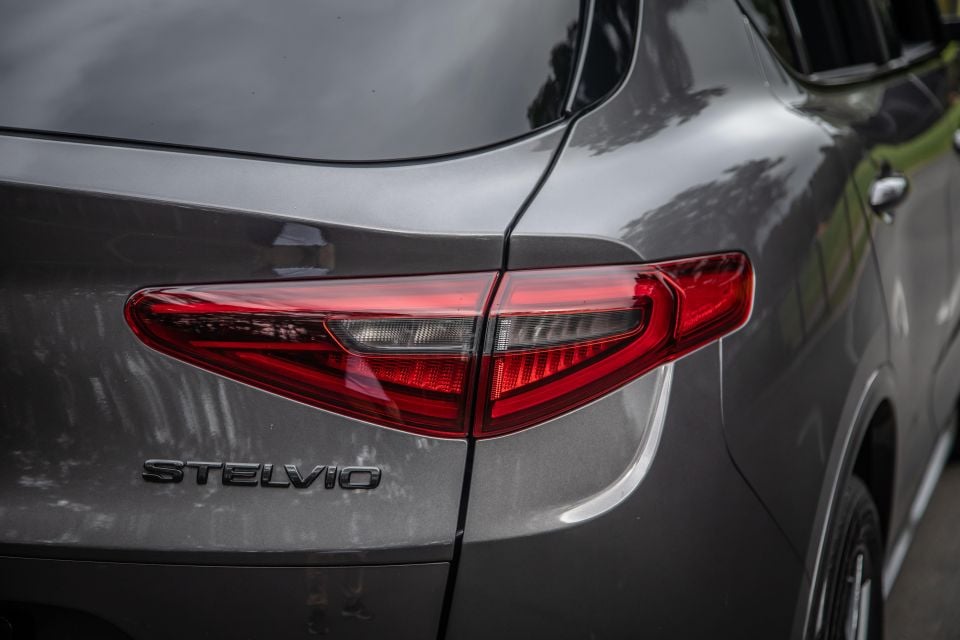
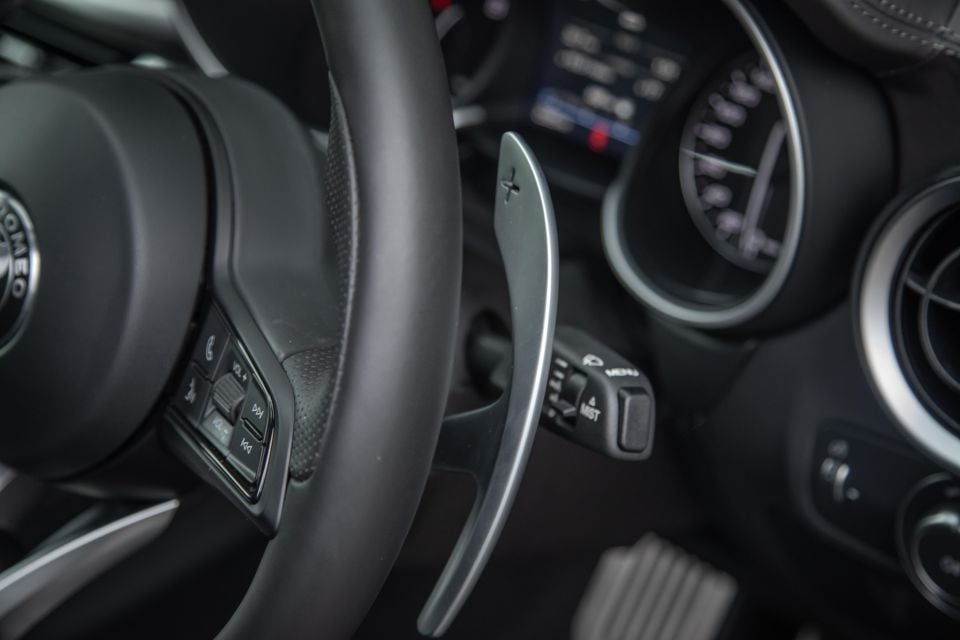
Buy your new car without the stress. It's fast, simple and completely free.

Great service from Travis and team, second time I have used this business would not hesitate to recommend them to anyone
Craig C.
Purchased a Ford Ranger in Sunshine Coast, QLD
CarExpert helped Craig save thousands on his Ford Ranger, now let us save you on your next new car.
Find a dealWe’ll dig deeper in the relevant section below, but the key hook for Veloce spec over the lower-grade Sport is largely mechanical. There’s a fair chunk of your extra $9000 investment wrapped up in the high-power engine, rear limited-slip differential, larger 20-inch wheels, and Alfa SDC active suspension.
Other exclusive goodies at the Veloce tier include a hands-free powered tailgate, leather dash and door trimming, ambient lighting, 10-speaker sound, and rear outboard seat heating to compliment the same feature in the first row.
Elsewhere, the Veloce shares with its Sport stablemate’s bi-xenon headlights with auto high-beam, rain-sensing wipers, power-folding and auto-dimming mirrors, front and rear parking sensors, rear privacy glass and a reversing camera.
Inside, there’s eight-way-electric front sports seats, leather trim, a 7.0-inch TFT driver’s screen, aluminium brightwork, dual-zone climate control, a heated steering wheel with column-mounted paddle-shifters, 8.8-inch touchscreen infotainment, DAB+, satellite navigation, 10-speaker/400-watt audio, and Apple CarPlay and Android Auto smartphone mirroring. Cruise control is adaptive.
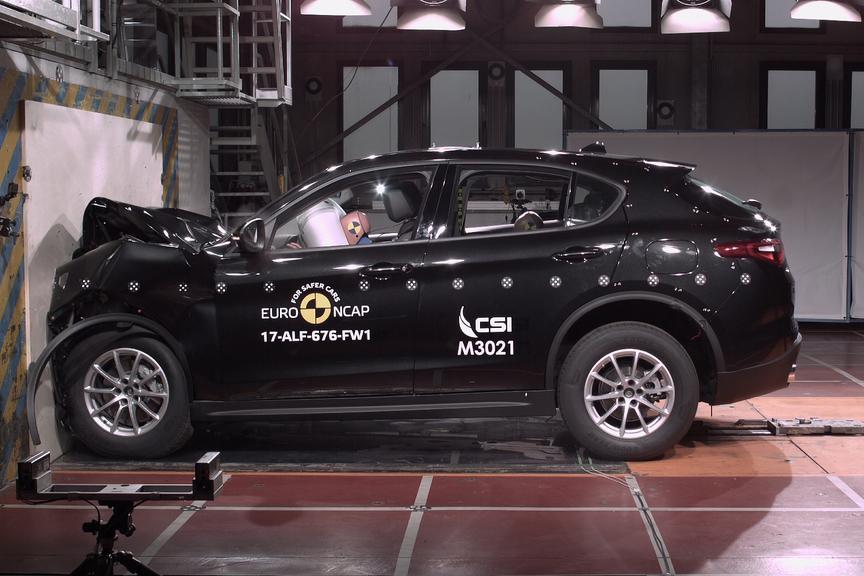
Four-cylinder versions of the Stelvio have a five-star ANCAP rating based on Euro NCAP testing from back in 2017.
It received a commendable 97 per cent score for adult occupant protection, 84 per cent for child occupant protection, a pedestrian protection score of 71 per cent and 60 per cent for safety assist.
Some of the tech in play includes autonomous emergency braking, forward collision warning, lane-keep assist, blind-spot assist, rear cross-traffic alert, traffic sign recognition, intelligent speed control and the curiously named driver behaviour warning, which presumably triggers if you’re steering like a loon.
It gets six airbags and rear-seat ISOFIX anchor points. Again, cruise control is adaptive and hill descent control is also fitted.
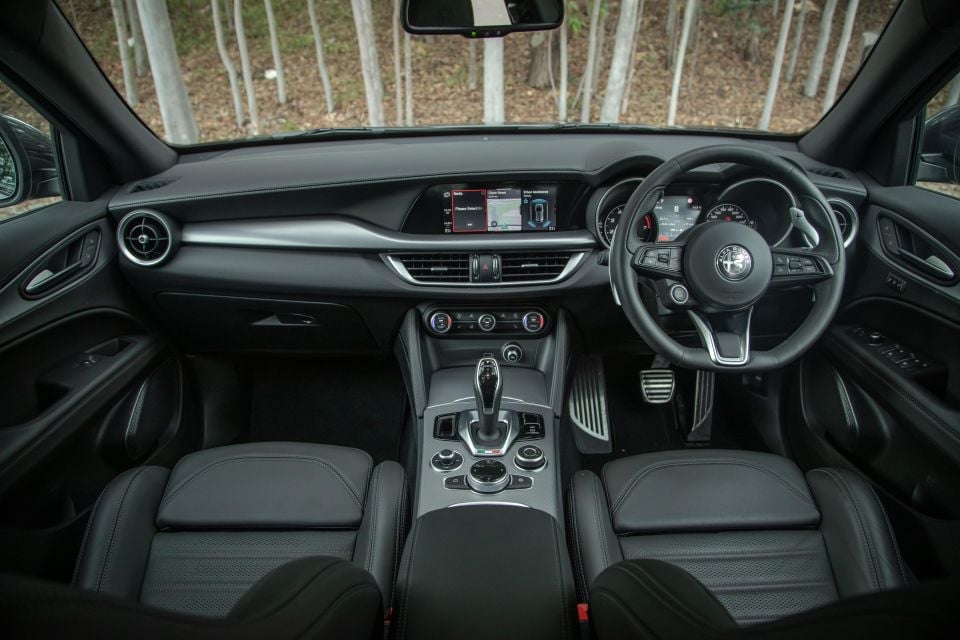
The Italian SUV favours more classic styling than what you find in some tech-laden German rivals and, for some tastes, it’s better for it.
While some might describe the design as plain, there’s a richness to the ambience that’s pleasing and punches above its weight for the Veloce’s price, particularly when it comes to some of the material use.
The aluminium garnish is real and the leather is genuinely sumptuous, two specific areas where so often premium machinery tends to feel unbelievably cheap through fakery and cost consciousness.
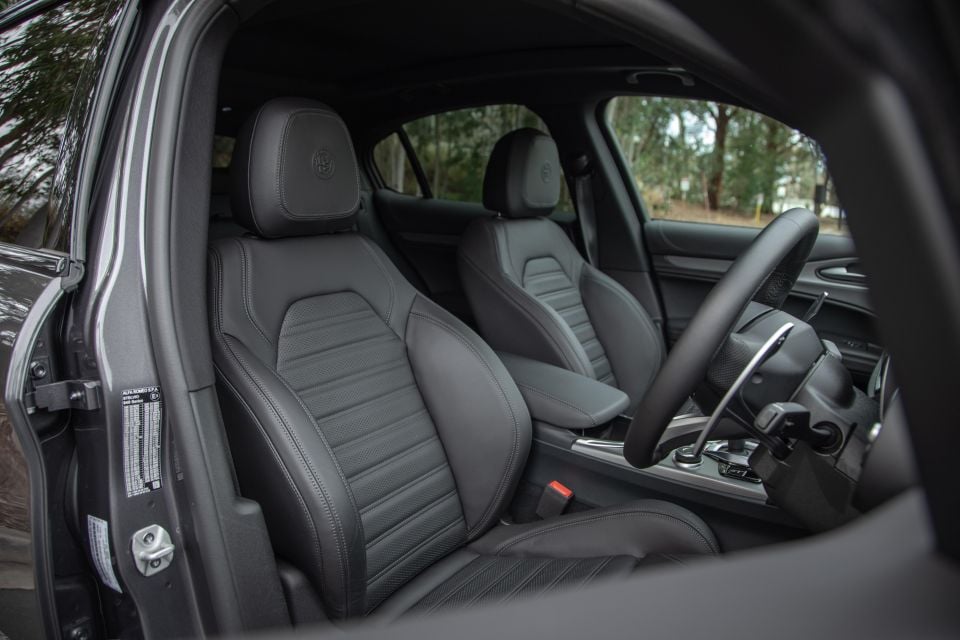
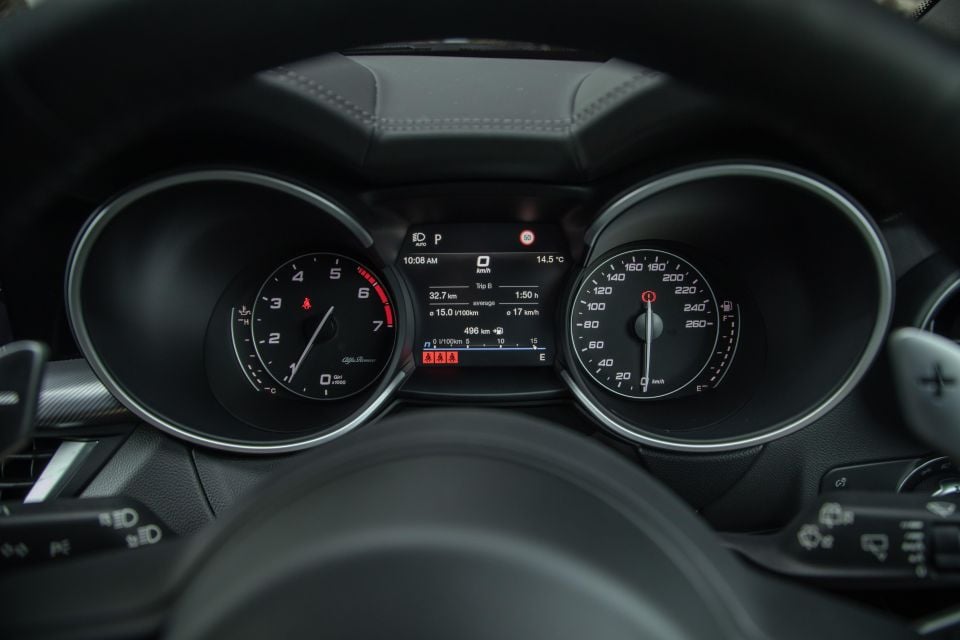
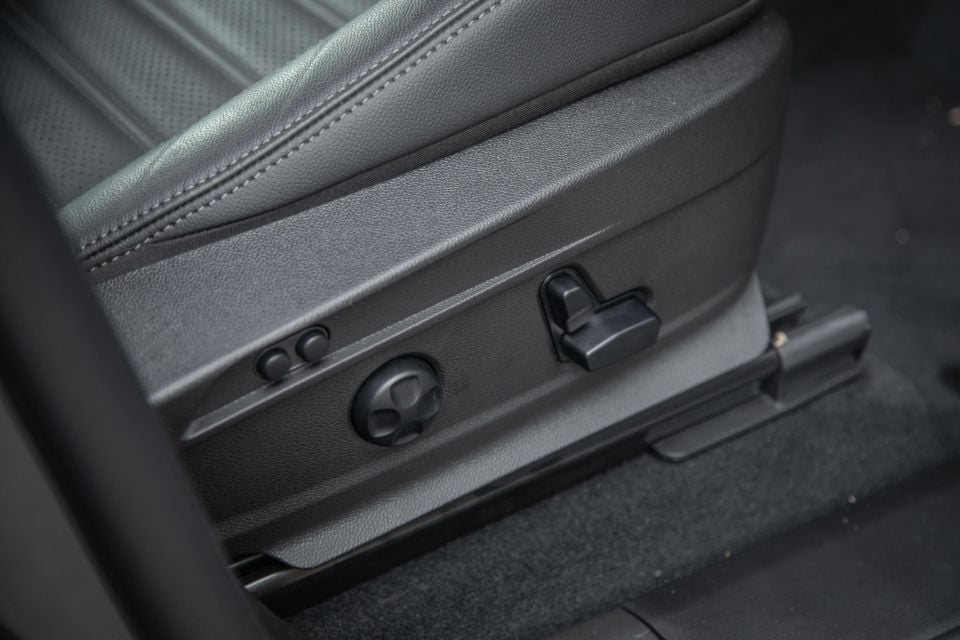
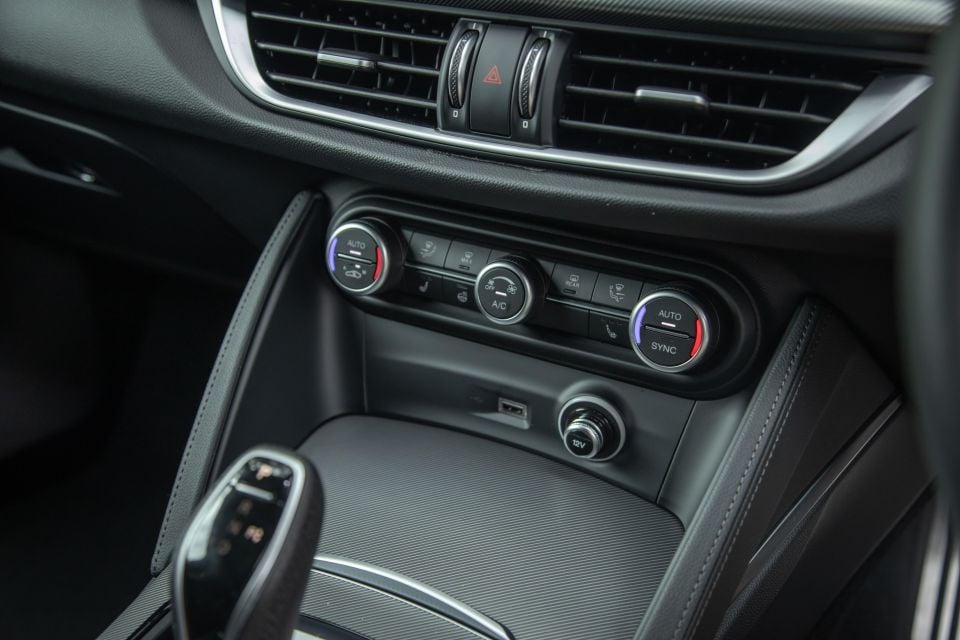
Alfa has copped criticism in the past for some low-rent interior application and while there are still hints of parts-binning from mainstream sources, some effort has been put into Stelvio’s cabin in its recent update. On balance, it feels solid and exudes quality and class, particularly in the Veloce with its extended leather application across the dash and door trims.
It features a nice wheel, pleasing analogue instrumentation, and robust switchgear, all minted with an Italian flavour. Ditto the massive paddle shifters, mounted to the column like some sort of nationalistic preference rather than the arguably more function wheel-mounted method, if thankfully far enough away from your knuckles as to not annoy.
The seats are nice, albeit with massive side bolsters that clearly serve body-hugging purpose more than they do long-haul comfort. If there is adjustment in the so-called Power Bolsters it’s very subtle, no matter how much you fiddle with the seat buttons.
They also suit slimmer body types, which could well be a deal-breaker for prospective owners.

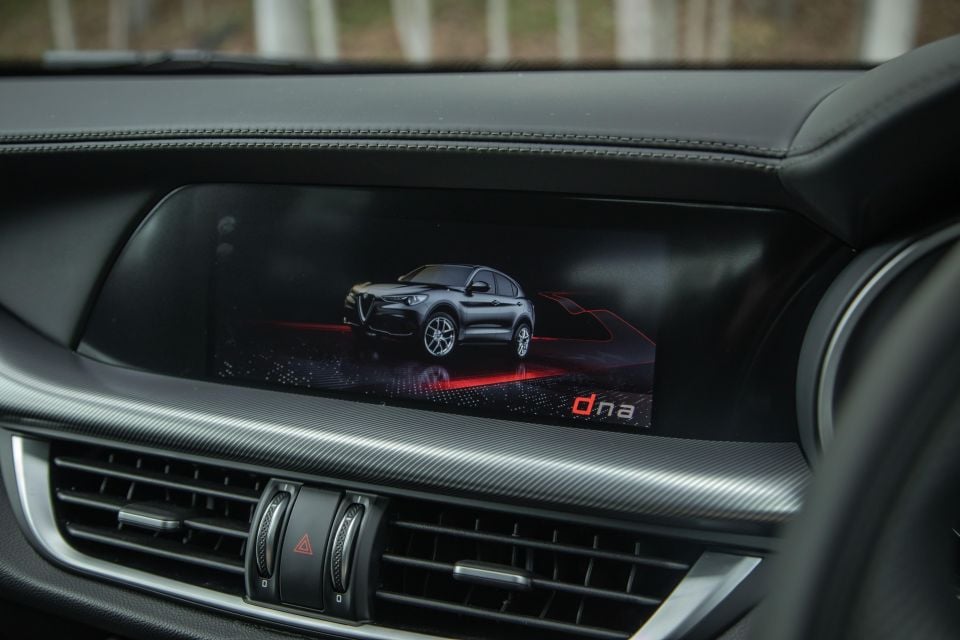
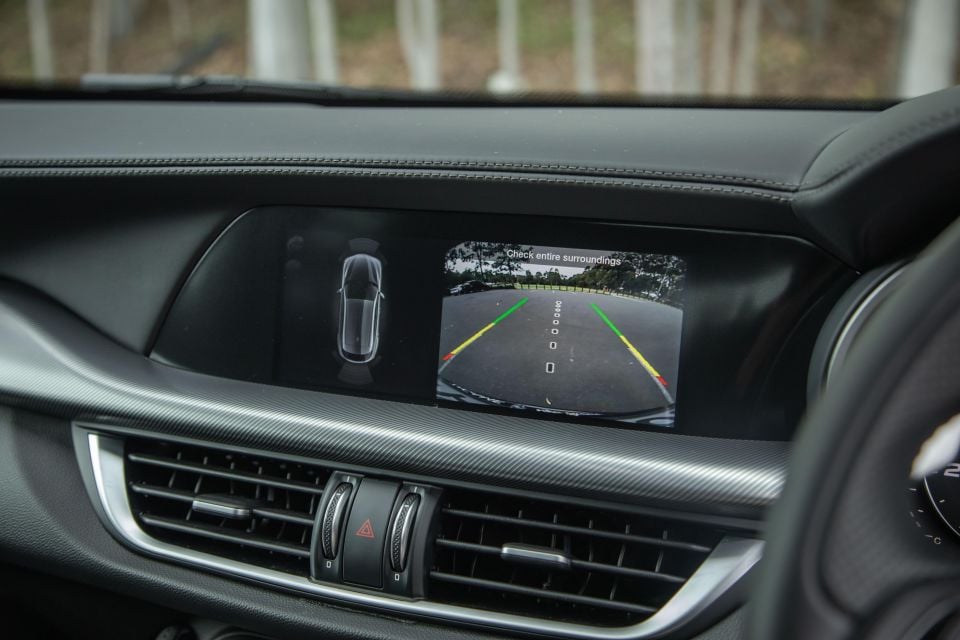
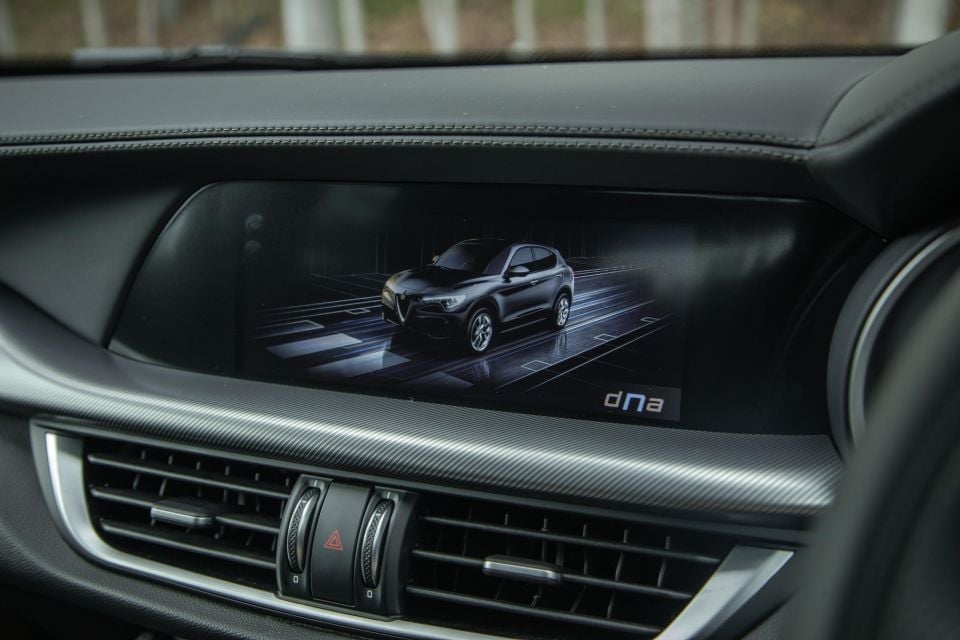
Letting the cabin down a little is the 8.8-inch infotainment system. It seems as large as the dash fascia aperture will allow without a major redesign, and its petite screen is sharp but not very intuitive to use.
Its touch inputs are pleasing – augmented by an old-school rotary-type control controller – but the content is simple, the sat-nav is plain and it’s not the slickest or quickest system out there. The jump in volume between radio and app streaming, too, is pronounced, though the sound system is excellent.
In short, if you’re after lots of dazzling big-screen eye candy, look elsewhere (towards Audi’s Q5 perhaps).
The console is a mixed bag. Pros include the key slot and inductive phone charging plate tucked neatly under the arm rest, though cons are the incredibly deep cupholders that countersink your drink and a USB port that forces you to run cables along the console length in a haphazard nature. Nitpicking, but still annoying.

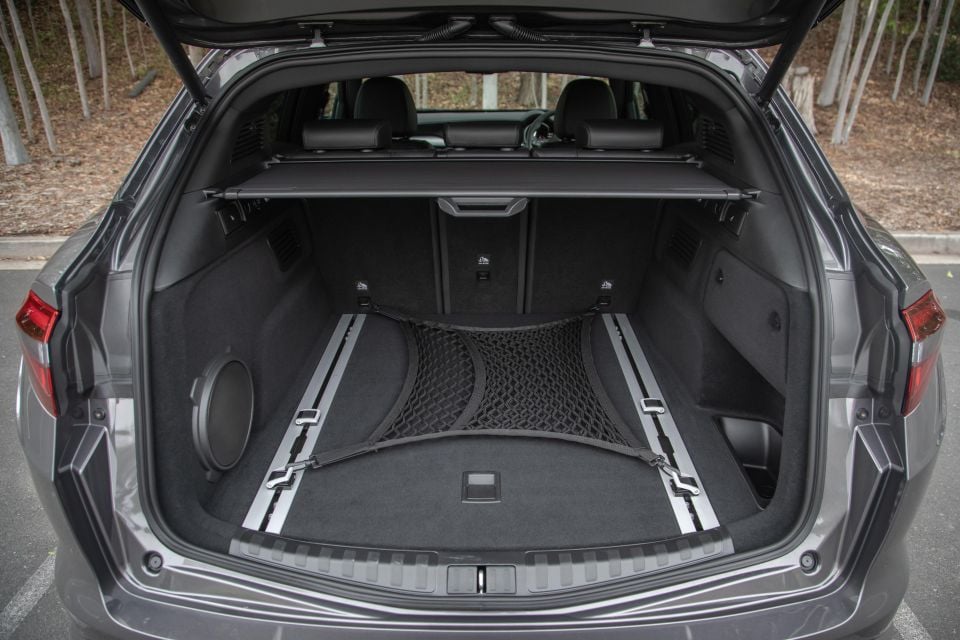

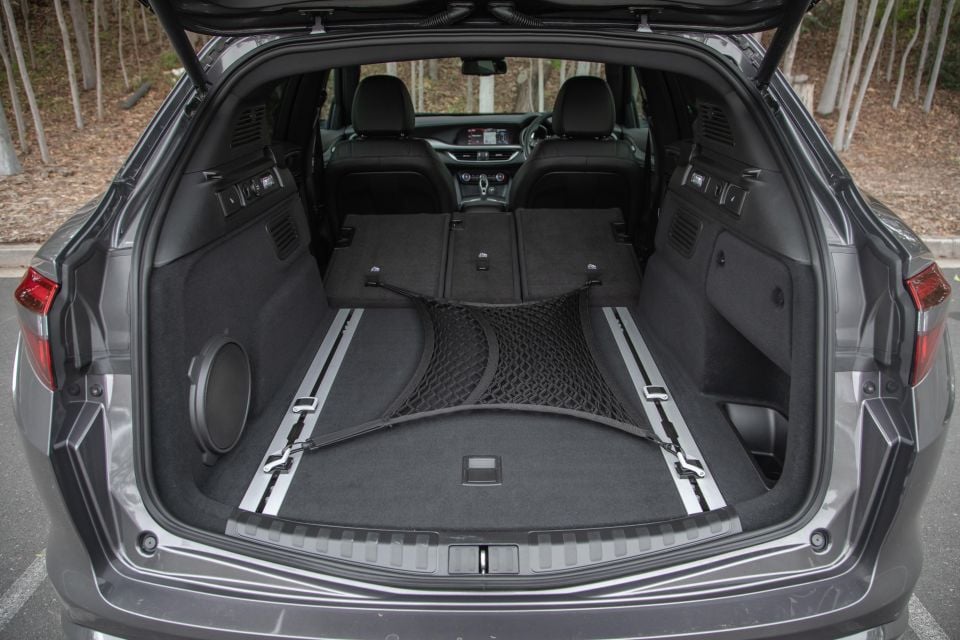
Rear accommodation is moderately roomy with a real plus-two vibe to the seating, and contours favouring the outboard positions.
There’s a strong tilt to the base but plenty of comfort and support from the 40:20:40 folding bench. Air vents, dual USB-A ports, seat heating controls – it’s fully formed and a nice place to spend time, helped in no small part by that sumptuous leather.
Like row two, the boot space piles on the goodness, with a handy elasticised luggage net, grocery bag hooks and remote seat folding levers. It’s deep and very usable, offering 525 litres of space standard or more concise 499L if you option a space-saver spare wheel, which expands to around 1600L.
Functional and classy, the Stelvio Veloce’s cabin is a real highlight.
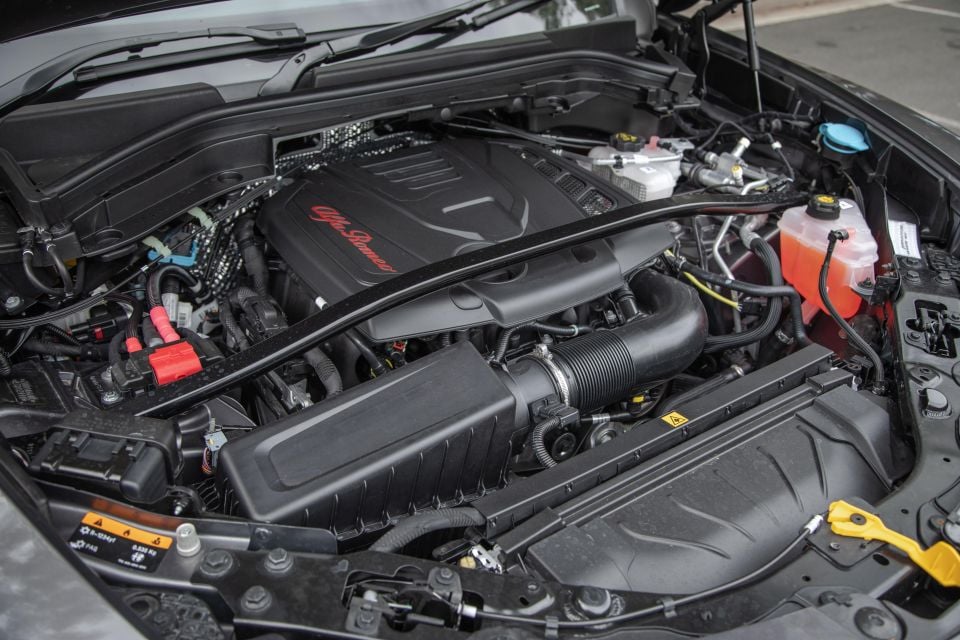
Motivation is provided by the high-power version of the range’s 2.0-litre turbocharged petrol four. Here, the engine format outputs 206kW and 400Nm, that later figure from 2250rpm, whereas lower-grade Stelvio variants adopt a version that produces a much more modest 147kW and 330Nm.
It’s backed by a ZF-sourced eight-speed torque-convertor – rather than a dual-clutch – and its paired with an on-demand, rear-biased all-wheel drive system that can shuffle up to 50 per cent of the torque to the front axle via an active transfer case. As mentioned above, the Veloce version has a self-locking mechanical rear limited-slip differential.
The Veloce gets Alfa SDC Active suspension, which is marketing spin for what’s ostensibly electronically-controlled adaptive damping for the aluminium-rich double-wishbone front and multi-link rear design.

The powertrain and suspension are switchable via the drive controller its maker calls Alfa DNA.
Performance is a claimed 5.7 seconds for the 0-100km/h sprint, much swifter than the 7.2-second figure for the base Stelvio and Sport with the lower-output tune. Top speed is said to be 230km/h.
Despite the performance advantage, the Veloce’s combined consumption claim is the same as lower-power versions, at 7.0L/100km. On test, we found that mixed driving returned figures in the nines. Unsurprisingly, it requires premium fuel for its 64-litre tank.
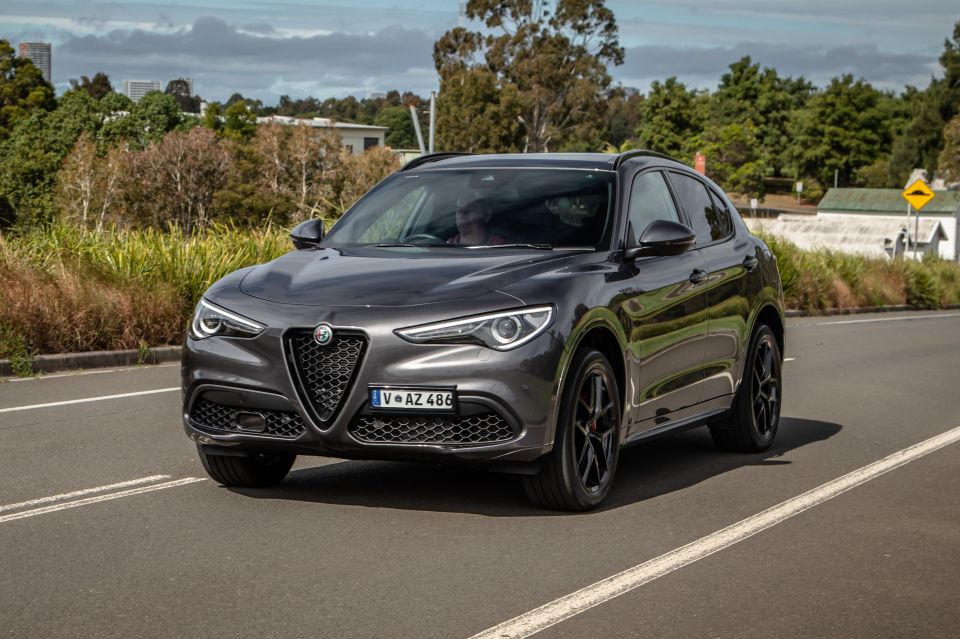
Where expert car reviews meet expert car buying – CarExpert gives you trusted advice, personalised service and real savings on your next new car.
Sub-6.0-second performance when spanked and 7.0-litre frugality when treated gently make for compelling numbers, but surely something has to give somewhere in the transition between the two. And it does.
First, the good bits. Inconspicuous on the form guide is that the Stevlio boasts 50:50 fore-aft weight distribution, more through the carmaker’s efforts than sheer luck.
Ditto its weighbridge ticket which, in under 1700kg kerb, is measurably more lightweight than some of its portly competitors. The Veloce has the right building blocks for dynamic talent, even before any of the driving-focused engineering plies its trade.
Chuck it through a corner and the Stelvio Veloce is very good. It points confidently, drives out of the exit ‘on the rear’ in a pleasing manner and, perhaps at its most impressive, is reactive and obedient in the mid-corner where it’s easy to adjust the chassis attitude and trajectory with your right foot.
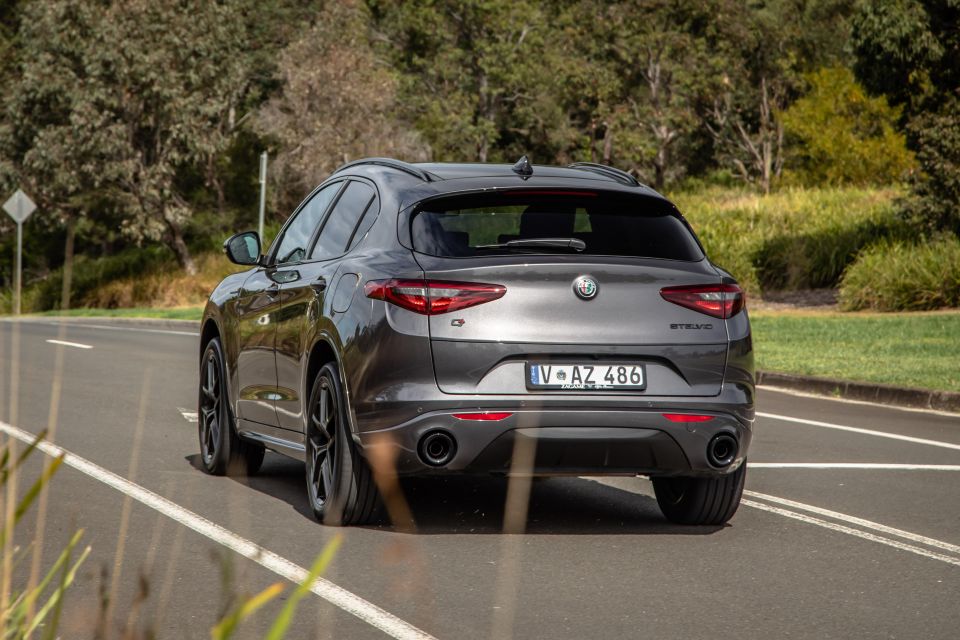
No, it’s not quite the athletic champ that is the technically-related Giulia Veloce – which I’ve driven recently – but that’s completely understandable given the SUV is shifting more inertia than its sedan stablemate.
In the DNA system’s ‘D for Dynamic’, there’s ample enthusiasm and just enough pep and obedience from the powertrain to do the chassis a good degree of justice. The engine, in particular, works hard for its keep, though it does deliver enough shove to transmit the desired purpose.
It’s a similar story with the novel brake-by-wire system in terms of stopping power, even if the wooden pedal feel leaves a bit to be desired.
You’ll really want to grab the Veloce’s scruff and aim for your preferred back-country twisties for one per cent of the ownership experience as a sort of pay-off. That’s because for the 99 per cent of the rest of SUV-owning humdrum, the Stelvio’s on-road character isn’t quite so impressive.

In ‘N for Natural’ or ‘A for Advanced Efficiency’ (aka Eco), the turbo four becomes quite inert and lazy in a clear effort to reduce consumption. It’s a similar story for the ZF-sourced automatic, which is less than perfectly clear in its shift calibration and hovers the engine unusually high – on or above 2000rpm – because that’s where peak torque clocks on.
In short, the high-power engine only feels anything like it in D and with the right foot welded to the carpet, characteristically and sonically.
The wooden brake pedal gets to point of annoyance around town, because its unnatural feel is tricky to modulate, particularly at low speeds and during stop-start driving. The steering, too, becomes vague and disconnected, if pleasingly light to use and satisfyingly direct.
As if not to deviate from theme, the default suspension tune (in N or A modes) is incredibly elastic. By that, I mean it’s overly cushy to the point of becoming wallowy, an almost super-soft air-suspension vibe that lolls about excessively.
Prodding the damper adjust button, atop the DNA rotary controller, appears not to affect the SUV’s boaty state at all.
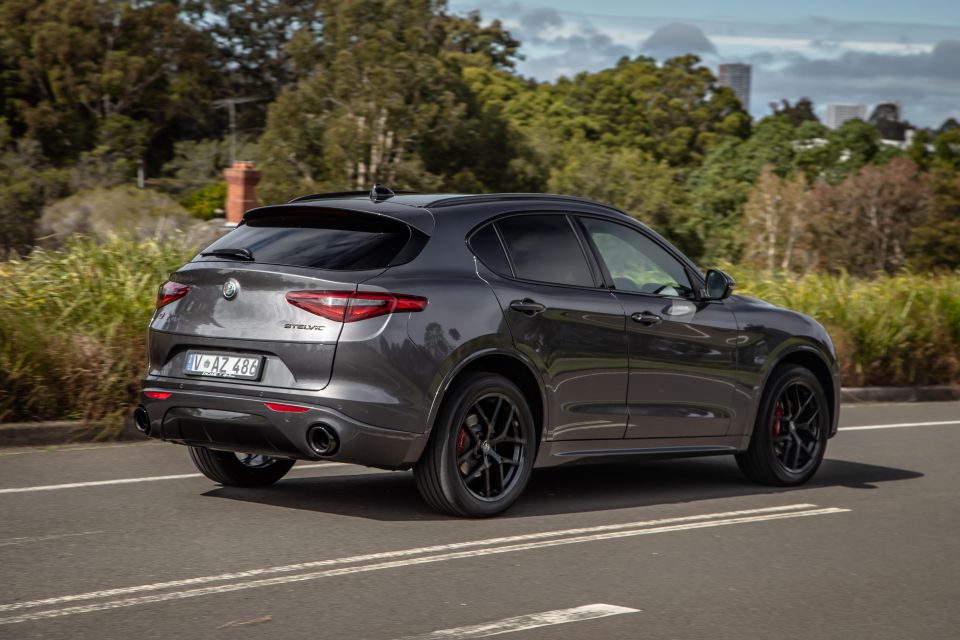
It would be acceptable if the suspension returned the sort of well-measured ride comfort as, say, the Giulia (in any of that range’s suspension configurations). But the Stelvio’s 20-inch wheels thud and jar across sharp-edged road imperfections and speed humps transmit a little too much of it through the cabin.
The Alfa Romeo family hauler isn’t alone in the premium SUV circles struggling with overly sharp primary ride and overly soft secondary ride – Aussies love big wheels and these symptoms are the big downsides. But still, it’s not great however you choose to cut it.
Despite its slightly disconcerting nature at a cruise, the Stelvio still offers the sort of premium vibe you expect, with decent noise suppression and a general sanguine nature about it, be it on back streets or out on the open road.
One strange foible is that the active lane-keeping seems to rarely, if ever, bring any assistance in the 60-80km/h band – major multi-lane road speeds – where most drivers will inevitably need it.

The Stelvio is covered by a very basic three-year warranty capped at 150,000kms.
That said, capped-priced servicing extends through five years, with fairly typical intervals of 12 months or 15,000 kilometres, whichever comes first.
Interval costs are $345, 645, $465, $1065 and $345, which averages out to $573 per year across five years.
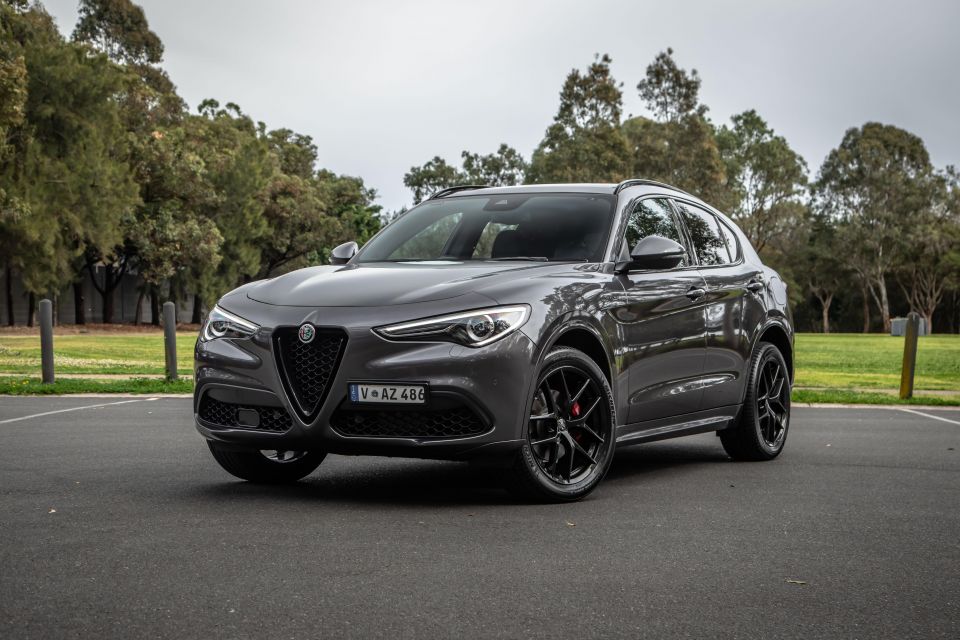
That the Stelvio Veloce piles on the charisma (powertrain notwithstanding) and brings a distinctively Italian vibe that’s almost the antithesis of generic…erm, Germanic SUV ethos is a big lure.
It packs in a lot of tech for the money even if it skimps a bit on the superficial stuff most owners take notice of, such as infotainment. It brings a sporting pitch and delivers large doses of it if you treat it with red-blooded enthusiasm.
However, in attempting to be both fiery and nice in equal measure, it’s not terribly resolved as an everyday prospect for runs to the shops or school, right down to the seats.
The Stelvio is the likeable and somewhat compelling alternative to the usual upmarket SUV suspects and is priced honestly for its pitch, too.
It’s not for everyone, although in many ways it’s better for it. But it would be measurably more likeable through a pragmatic lens if its maker polished up some of its around-town tardiness.

Click the images for the full gallery
Where expert car reviews meet expert car buying – CarExpert gives you trusted advice, personalised service and real savings on your next new car.


Max Davies
44 Minutes Ago


William Stopford
45 Minutes Ago


Derek Fung
1 Hour Ago


Max Davies
9 Hours Ago


William Stopford
1 Day Ago


Ben Zachariah
1 Day Ago